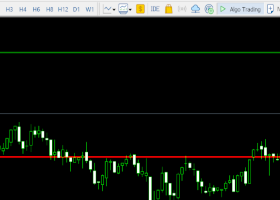
Financial Conditions Ease, But Risks Ahead - Goldman Sachs
Looking back to the mid-February inflection point, market sentiment has since started to improve with regard to the growth outlook, with financial conditions subsequently easing also. Growth views continue to make progress, as manufacturing data in the US seem to have turned the corner. The February US ISM ticked higher, regional surveys have shown incremental improvement on top of that, and the more-forward-looking new orders to inventory ratio suggests that there may be more room to run.
At the same time, the easing in US financial conditions has extended, accelerating since the FOMC meeting. Over the last week, the degree of easing in US financial conditions has been quite large, ranking in the 95th percentile, historically, with nearly all sub-components contributing to that easing and moving by similarly large amounts. Although we had been concerned that an improving growth outlook would give way to restrictive rate views it seems as if accommodative policy is helping to fuel markets alongside a better growth outlook. Indeed, market focus on the impact of an easing in US financial conditions has picked up recently, with relative returns across global equity indices and across (trade-weighted) currencies driven by relative exposure to easier US financial conditions. More broadly, over the last week, as financial conditions have eased, yield declines have coincided with a pick-up in the S&P, indicative of an easing shock working through the system as opposed to a growth shock. This stands in contrast to Europe, where, despite a small decline in yields, growth views have stumbled and equity markets have not been as buoyant.
Copy signals, Trade and Earn $ on Forex4you - https://www.share4you.com/en/?affid=0fd9105
Although there has certainly been a bit of relief in the wake of easing in Japan and Europe, a continued policy pause in the US, and a pick-up in the industrial data, there are several sources of uncertainty that may continue to linger and possibly even intensify. Reflecting the balance between the recent relaxation in risk and lingering concerns, front-month equity volatility – as measured by the VIX – has declined sharply and is now below 14 (a low for the year and in line with 2014 and 2015 average levels). Yet, the forward curve has steepened and is at the wide end of its recent range, with the August contract in the 20 range.
Specifically, we continue to expect three Fed hikes this year, which could be a market speed bump if the growth impulse fades. An April hike is not our baseline case but is certainly a possibility – a message reinforced by recent Fed speakers. European geopolitical risk continues to be a major focus as well on several fronts, as underscored by the attacks in Belgium yesterday.
Other event risks relate to the UK referendum on its EU membership slated for June 23, a week after the June FOMC meeting, and the refugee situation across Europe.
Finally, in the US, political risks could intensify as the primary process comes to a close, bringing more market focus to the uncertainty surrounding the outlook for US policy.
![[$9,496] in 5 Days Using 'Supply Demand EA ProBot' (Live Results) [$9,496] in 5 Days Using 'Supply Demand EA ProBot' (Live Results)](https://c.mql5.com/6/965/splash-preview-761070-1740062258.png)

